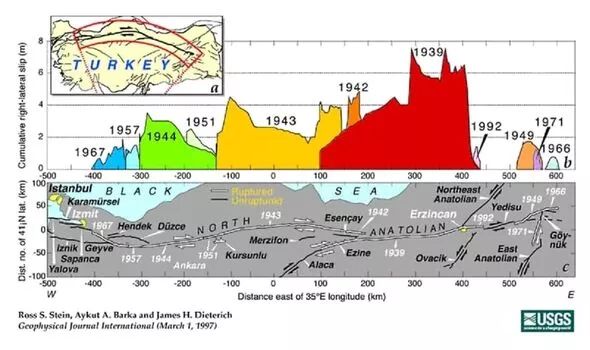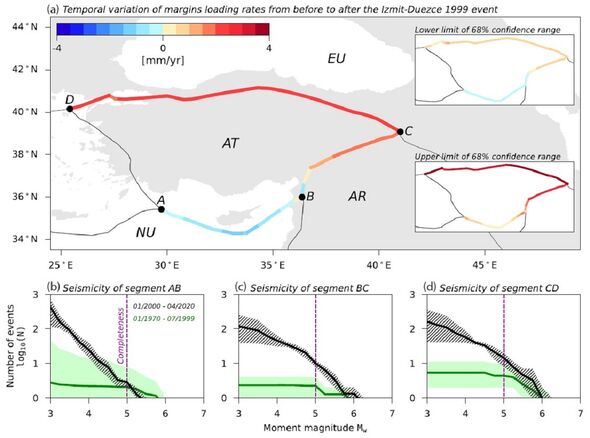- Home
- Magazines
-
Newsletters
- 19 July 2024
- 12 July 2024
- 5 July 2024
- 28 June 2024
- 14 June 2024
- 7 June 2024
- 31 May 2024
- 24 May 2024
- 17 May 2024
- 10 May 2024
- 3 May 2024
- 26 April 2024
- 19 April 2024
- 12 April 2024
- 22 March 2024
- 15 March 2024
- 8 March 2024
- 1 March 2024
- 23 February 2024
- 16 February 2024
- 9 February 2024
- 26 January 2024
- 19 January 2024
- 12 January 2024
- 22 December 2023
- 1 December 2023
- 24 November 2023
- 10 November 2023
- 3 November 2023
- 27 October 2023
- 20 October 2023
- 13 October 2023
- 6 October 2023
- 29 September 2023
- 22 September 2023
- 15 September 2023
- 8 September 2023
- 25 August 2023
- 18 August 2023
- 11 August 2023
- 4 August 2023
- 28 July 2023
- 21 July 2023
- 14 July 2023
- 7 July 2023
- 30 June 2023
- 23 June 2023
- 15 June 2023
- 2 June 2023
- 26 May 2023
- 19 May 2023
- 12 May 2023
- 5 May 2023
- 28 April 2023
- 21 April 2023
- 14 April 2023
- 6 April 2023
- 31 March 2023
- 24 March 2023
- 17 March 2023
- 10 March 2023
- 3 March 2023
- 24 February 2023
- 17 February 2023
- 10 February 2023
- 3 February 2023
- 27 January 2023
- 13 January 2023
- 22 December 2022
- 15 December 2022
- 9 December 2022
- 2 December 2022
- 25 November 2022
- 18 November 2022
- 11 November 2022
- 4 November 2022
- Advertising
- Subscribe
- Articles
-
Galleries
- AOSH Firexpo 2024
- Midvaal Fit to Fight Fire 2024
- WoF KNP 2023 Gallery
- TFA 2023 Gallery
- DMISA Conference 2023
- ETS 2023 Gallery
- Drager Fire Combat and Rescue Challenge 2023
- AOSH Firexpo 2023
- Midvaal Fit to Fight Fire
- WC IFFD 2023
- NMU 13th Fire Management Symposium 2022
- JOIFF Africa Conference 2022
- ETS 2022 Gallery
- TFA 2022 Gallery
- IFFD 2018
- SAESI
- TFA
- WRC 2018
- WRC 2019
- A-OSH/Securex
- IFE AGM 2019
- ETS Ind Fire Comp Nov 2019
- ETS Challenge 2021
- Drager launch
- Drager Fire Combat and Rescue Challenge 2022
- TFA
- Contact
- Home
- Magazines
-
Newsletters
- 19 July 2024
- 12 July 2024
- 5 July 2024
- 28 June 2024
- 14 June 2024
- 7 June 2024
- 31 May 2024
- 24 May 2024
- 17 May 2024
- 10 May 2024
- 3 May 2024
- 26 April 2024
- 19 April 2024
- 12 April 2024
- 22 March 2024
- 15 March 2024
- 8 March 2024
- 1 March 2024
- 23 February 2024
- 16 February 2024
- 9 February 2024
- 26 January 2024
- 19 January 2024
- 12 January 2024
- 22 December 2023
- 1 December 2023
- 24 November 2023
- 10 November 2023
- 3 November 2023
- 27 October 2023
- 20 October 2023
- 13 October 2023
- 6 October 2023
- 29 September 2023
- 22 September 2023
- 15 September 2023
- 8 September 2023
- 25 August 2023
- 18 August 2023
- 11 August 2023
- 4 August 2023
- 28 July 2023
- 21 July 2023
- 14 July 2023
- 7 July 2023
- 30 June 2023
- 23 June 2023
- 15 June 2023
- 2 June 2023
- 26 May 2023
- 19 May 2023
- 12 May 2023
- 5 May 2023
- 28 April 2023
- 21 April 2023
- 14 April 2023
- 6 April 2023
- 31 March 2023
- 24 March 2023
- 17 March 2023
- 10 March 2023
- 3 March 2023
- 24 February 2023
- 17 February 2023
- 10 February 2023
- 3 February 2023
- 27 January 2023
- 13 January 2023
- 22 December 2022
- 15 December 2022
- 9 December 2022
- 2 December 2022
- 25 November 2022
- 18 November 2022
- 11 November 2022
- 4 November 2022
- Advertising
- Subscribe
- Articles
-
Galleries
- AOSH Firexpo 2024
- Midvaal Fit to Fight Fire 2024
- WoF KNP 2023 Gallery
- TFA 2023 Gallery
- DMISA Conference 2023
- ETS 2023 Gallery
- Drager Fire Combat and Rescue Challenge 2023
- AOSH Firexpo 2023
- Midvaal Fit to Fight Fire
- WC IFFD 2023
- NMU 13th Fire Management Symposium 2022
- JOIFF Africa Conference 2022
- ETS 2022 Gallery
- TFA 2022 Gallery
- IFFD 2018
- SAESI
- TFA
- WRC 2018
- WRC 2019
- A-OSH/Securex
- IFE AGM 2019
- ETS Ind Fire Comp Nov 2019
- ETS Challenge 2021
- Drager launch
- Drager Fire Combat and Rescue Challenge 2022
- TFA
- Contact
|
17 February 2023
|
'Ground-breaking' Turkey earthquake discovery sparks call for new risk assessments
Just as earthquakes are triggered by the movement of tectonic plates, they can also change plate motions and the likelihood of future tremors, experts studying an episode in Turkey have warned, leading to calls for vital quake risk models to be re-evaluated. Like bits of congealed skin floating on top of a bowl of custard, Earth’s tectonic plates sit atop the mantle, driven into constant glacial motion by a combination of convection currents in the underlying mantle and the effect of gravity pulling plates down at subduction zones.
As the plates slowly scrape past each other they can stick, with stress building up in the rock around the plate margins until such suddenly ruptures along a fault line, releasing a vast amount of energy in the form of an earthquake. For seismologists, it was long assumed that this process represented a one-way mechanism, with earthquakes being driven by plate motion and not the other way around, until now.
In their new "ground-breaking" study, geophysicist Dr Juan Martin de Blas of the University of Copenhagen, Denmark and his colleagues combined extensive GPS data with an analysis of the earthquakes that struck the district of İzmit, in Turkey’s Kocaeli province, back in 1999.
This activity peaked with a mainshock, some 37 seconds in duration and measuring 7,4 on the Richter scale, on 17 August 1999 that caused considerable structural damage, fires and is officially estimated to have killed 17 127 people and injured 43 953 more.
In fact, İzmit is one of the strongest earthquakes to strike Europe in recent decades.
Seismologists determined that the focus of the earthquake lay some 9,3 miles under İzmit, and is part of a series of movements along the North Anatolian Fault dating back to 1939.
The researchers’ investigation has revealed that, since the earthquake, the tectonic plate on which Turkey sits, the “Anatolian Plate”, has changed its direction of movement.
Furthermore, the team said, this shift appears to have altered the frequencies of seismic activity in the region around Turkey. Dr Martin de Blas said, "It appears that the link between plate motion and earthquake occurrence is not a one-way street. Earthquakes themselves feed back, as they can cause plates to move differently afterwards. As the plate movements change, it somewhat affects the pattern of the later earthquakes. If a tectonic plate shifts direction or moves at a different rate than before, this potentially impacts on the seismicity of its margins with neighbouring plates."
The researchers have said that their findings call for a re-evaluation of earthquake risk models that are based on the interpretation of data collected from the monitoring of tectonic plate movements.
Paper author and geophysicist Professor Giampiero Iaffaldano, also of the University of Copenhagen, said, "An important aspect of these models is that they operate under the assumption that plate movements remain constant. With this study, we can see that this isn’t the case. Therefore, the models can now be further evolved so they take the feedback mechanism that occurs following an earthquake into account, where plates shift direction and speed.”
Until recently, the team explained, it had been necessary to assume that plate movements are constant, largely because it was impossible to monitor tectonic motions on the scale of a few years under the widespread adoption of GPS devices.
While approaches vary from place to place, it is common for GPS transmitters that track tectonic motion to be positioned near plate boundaries.
However, the researchers argued, we would benefit from installing more GPS devices in plate interiors, far away from their margins.
Professor Iaffaldano added, “Plate boundaries undergo constant deformation and poorly represent the movement of plates as a whole. Therefore, GPS data from monitors positioned farther away from the plate boundaries should be used to a much greater degree. This can better inform us whether plates are changing motion and how and provide information useful for assessing the risk of future events somewhere other than the known hot-spots.”
The researchers cautioned that their study was limited to the Anatolian continental plate. This was in no small part because the 1999 İzmit quake is one of the few for which enough GPS and seismic data was available for analysis.
However, they said, it is reasonable to expect that the findings can be extrapolated out to other faults elsewhere across the globe.
The full findings of the study were published in Geophysical Journal International.
Source: Express
As the plates slowly scrape past each other they can stick, with stress building up in the rock around the plate margins until such suddenly ruptures along a fault line, releasing a vast amount of energy in the form of an earthquake. For seismologists, it was long assumed that this process represented a one-way mechanism, with earthquakes being driven by plate motion and not the other way around, until now.
In their new "ground-breaking" study, geophysicist Dr Juan Martin de Blas of the University of Copenhagen, Denmark and his colleagues combined extensive GPS data with an analysis of the earthquakes that struck the district of İzmit, in Turkey’s Kocaeli province, back in 1999.
This activity peaked with a mainshock, some 37 seconds in duration and measuring 7,4 on the Richter scale, on 17 August 1999 that caused considerable structural damage, fires and is officially estimated to have killed 17 127 people and injured 43 953 more.
In fact, İzmit is one of the strongest earthquakes to strike Europe in recent decades.
Seismologists determined that the focus of the earthquake lay some 9,3 miles under İzmit, and is part of a series of movements along the North Anatolian Fault dating back to 1939.
The researchers’ investigation has revealed that, since the earthquake, the tectonic plate on which Turkey sits, the “Anatolian Plate”, has changed its direction of movement.
Furthermore, the team said, this shift appears to have altered the frequencies of seismic activity in the region around Turkey. Dr Martin de Blas said, "It appears that the link between plate motion and earthquake occurrence is not a one-way street. Earthquakes themselves feed back, as they can cause plates to move differently afterwards. As the plate movements change, it somewhat affects the pattern of the later earthquakes. If a tectonic plate shifts direction or moves at a different rate than before, this potentially impacts on the seismicity of its margins with neighbouring plates."
The researchers have said that their findings call for a re-evaluation of earthquake risk models that are based on the interpretation of data collected from the monitoring of tectonic plate movements.
Paper author and geophysicist Professor Giampiero Iaffaldano, also of the University of Copenhagen, said, "An important aspect of these models is that they operate under the assumption that plate movements remain constant. With this study, we can see that this isn’t the case. Therefore, the models can now be further evolved so they take the feedback mechanism that occurs following an earthquake into account, where plates shift direction and speed.”
Until recently, the team explained, it had been necessary to assume that plate movements are constant, largely because it was impossible to monitor tectonic motions on the scale of a few years under the widespread adoption of GPS devices.
While approaches vary from place to place, it is common for GPS transmitters that track tectonic motion to be positioned near plate boundaries.
However, the researchers argued, we would benefit from installing more GPS devices in plate interiors, far away from their margins.
Professor Iaffaldano added, “Plate boundaries undergo constant deformation and poorly represent the movement of plates as a whole. Therefore, GPS data from monitors positioned farther away from the plate boundaries should be used to a much greater degree. This can better inform us whether plates are changing motion and how and provide information useful for assessing the risk of future events somewhere other than the known hot-spots.”
The researchers cautioned that their study was limited to the Anatolian continental plate. This was in no small part because the 1999 İzmit quake is one of the few for which enough GPS and seismic data was available for analysis.
However, they said, it is reasonable to expect that the findings can be extrapolated out to other faults elsewhere across the globe.
The full findings of the study were published in Geophysical Journal International.
Source: Express
Quick navigation
Social
|
Who are we?FRI Media (Pty) Ltd is an independent publisher of technical magazines including the well-read and respected Fire and Rescue International, its weekly FRI Newsletter and the Disaster Management Journal. We also offer a complete marketing and publishing package, which include design, printing and corporate wear and gifts. |
Weekly FRI Newsletter |
© Copyright 2018 Fire and Rescue International. All Rights Reserved.






